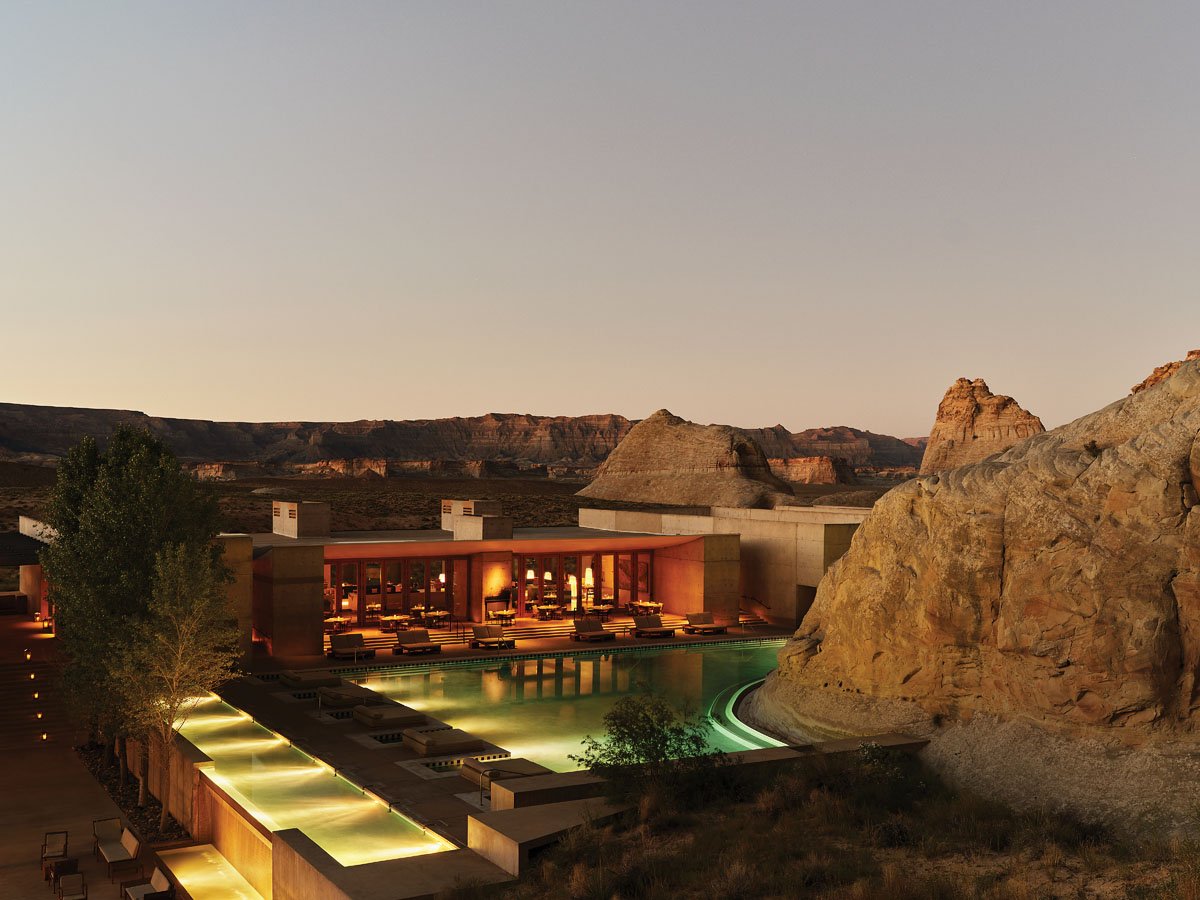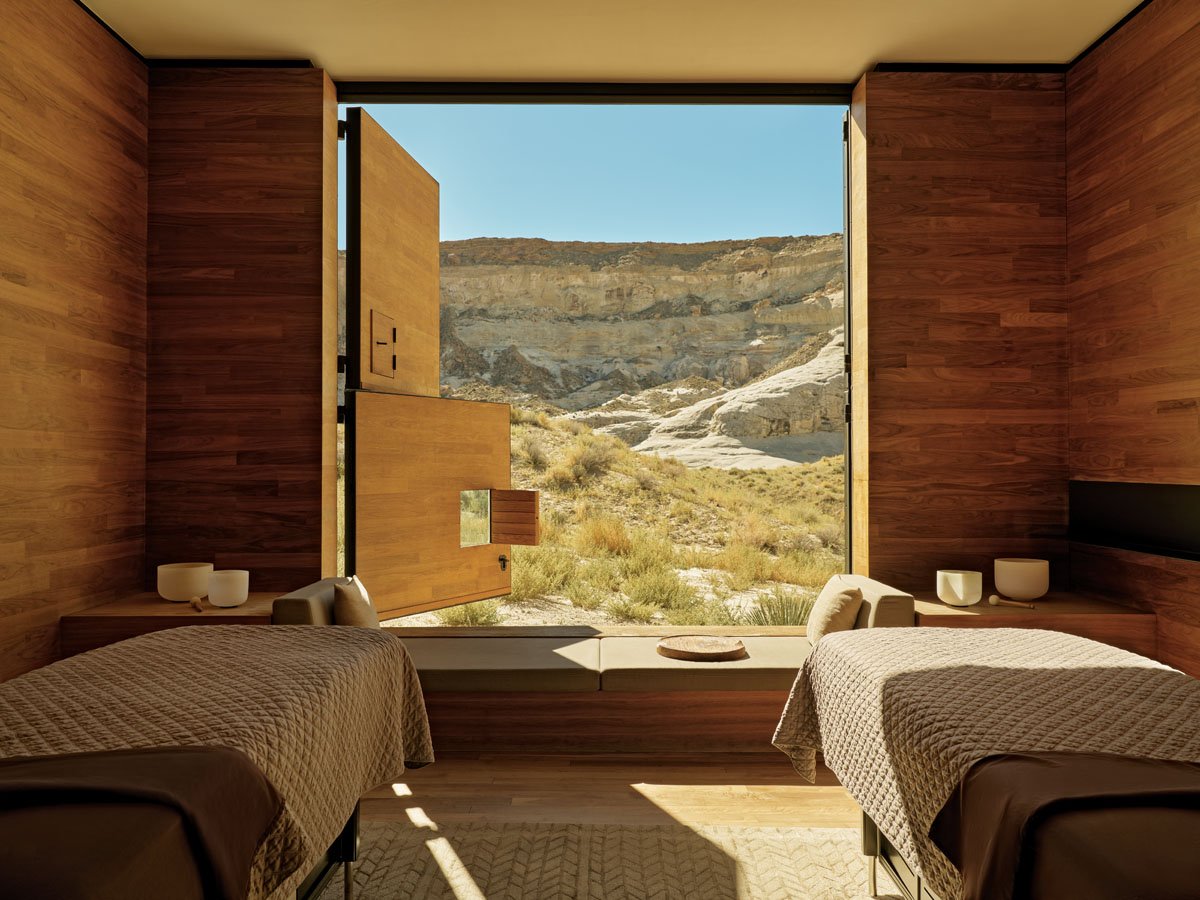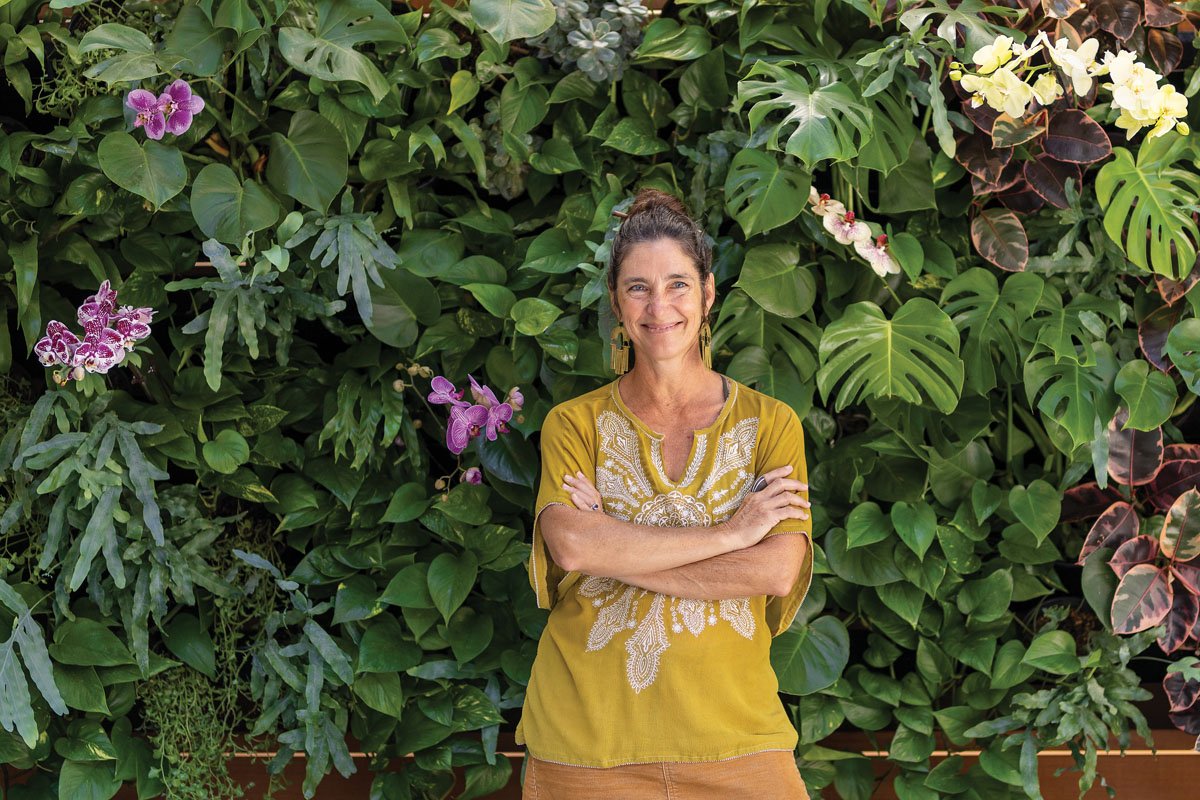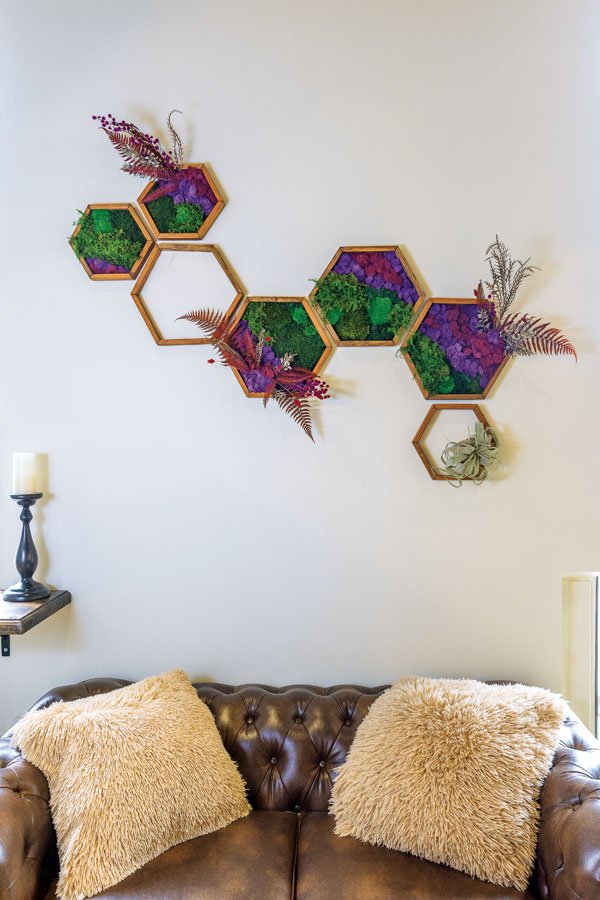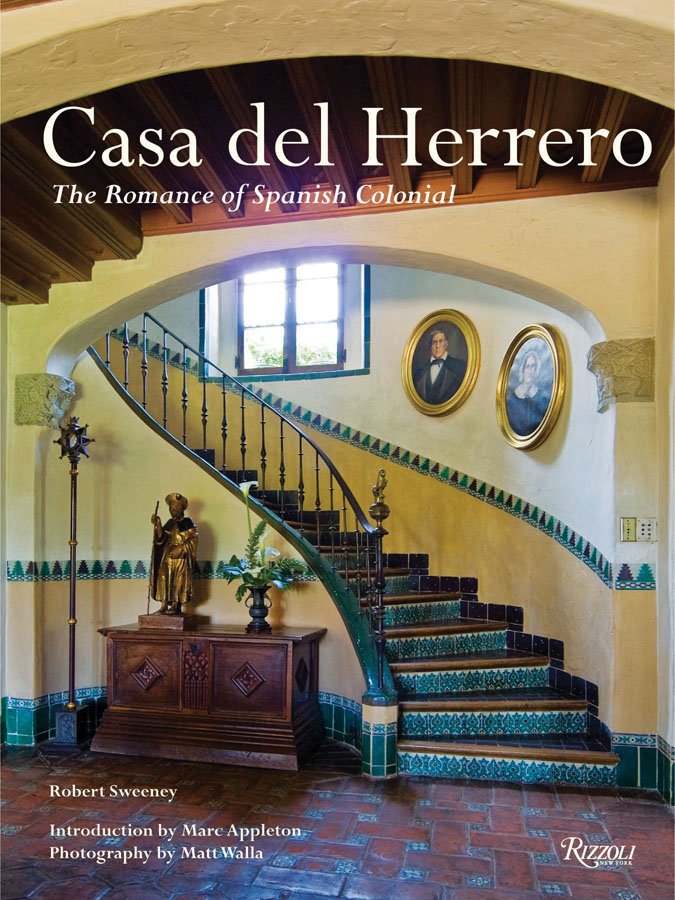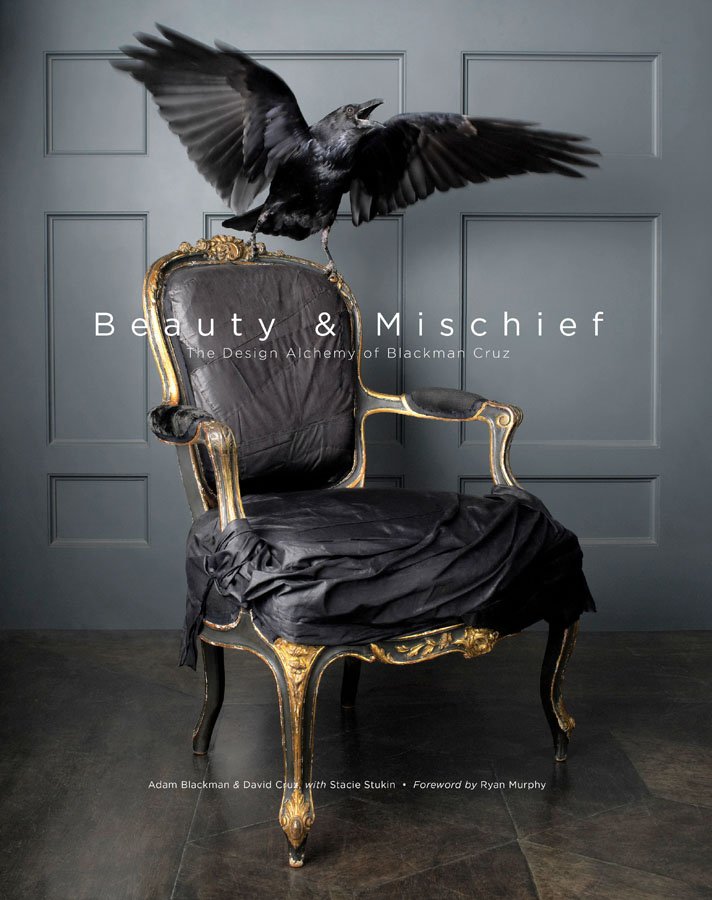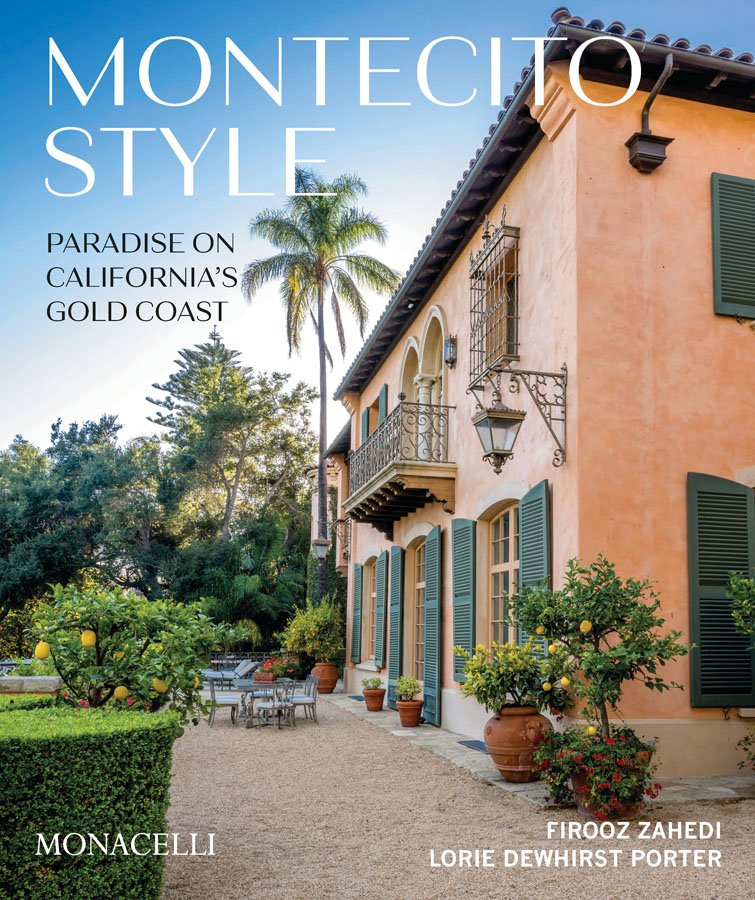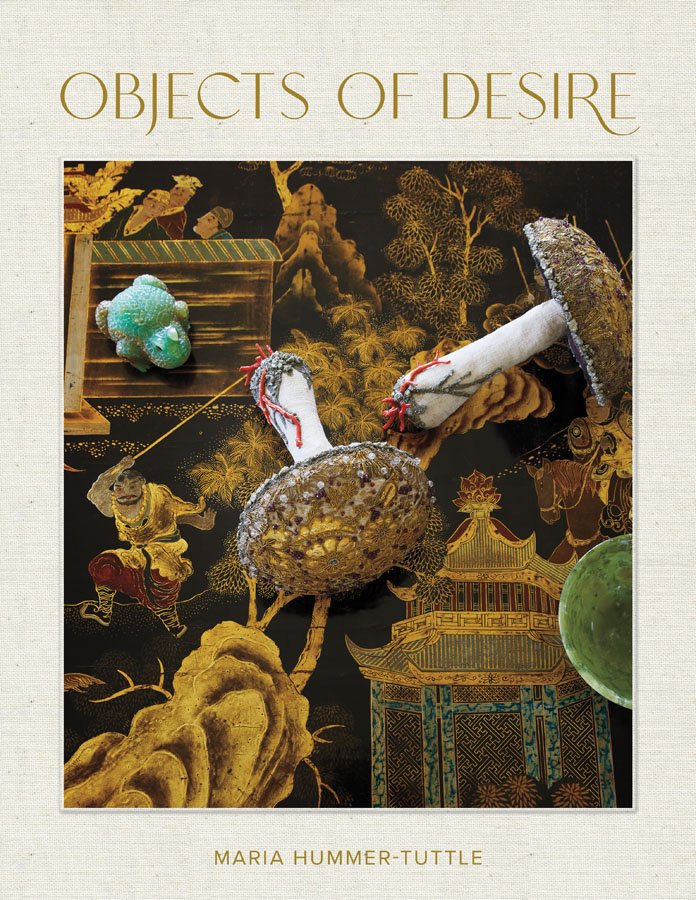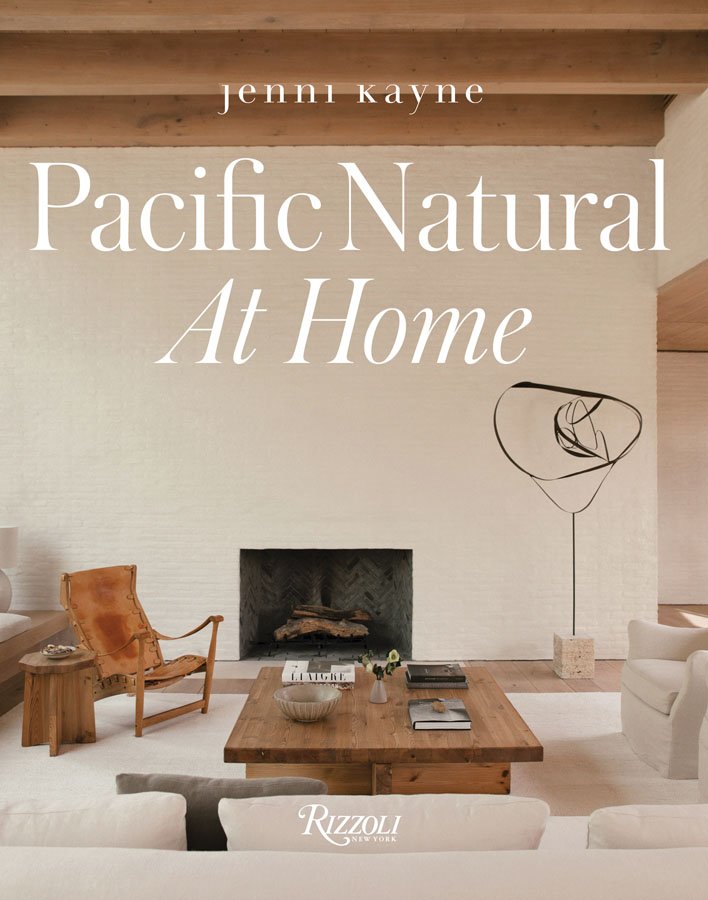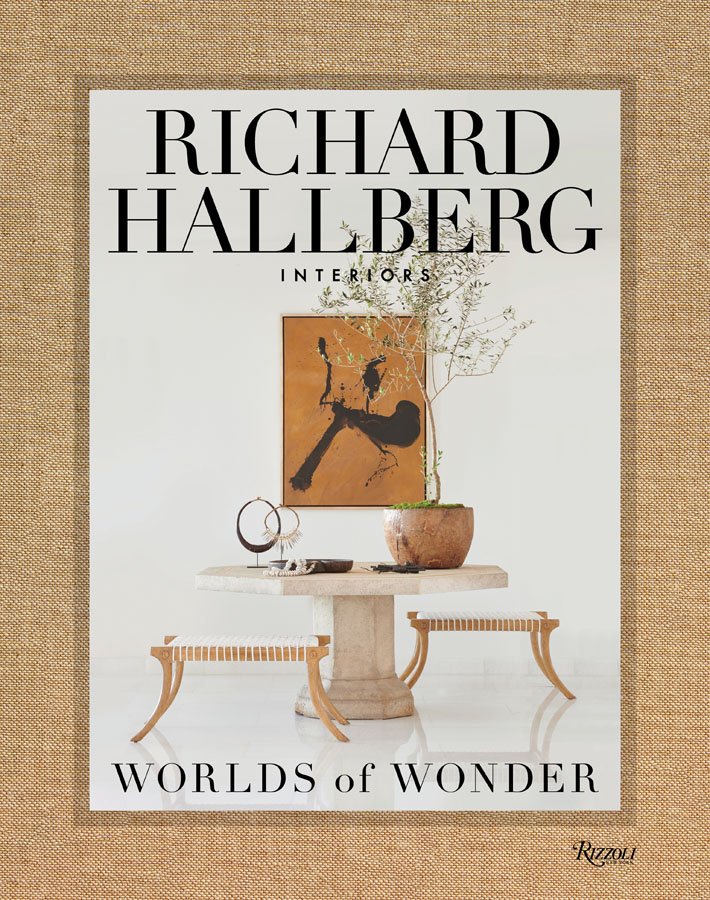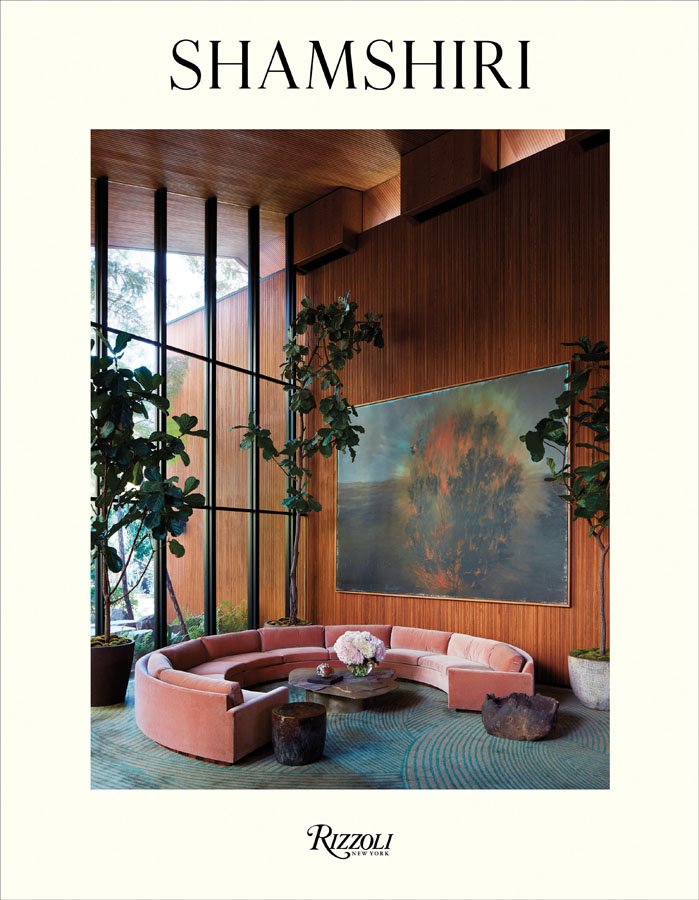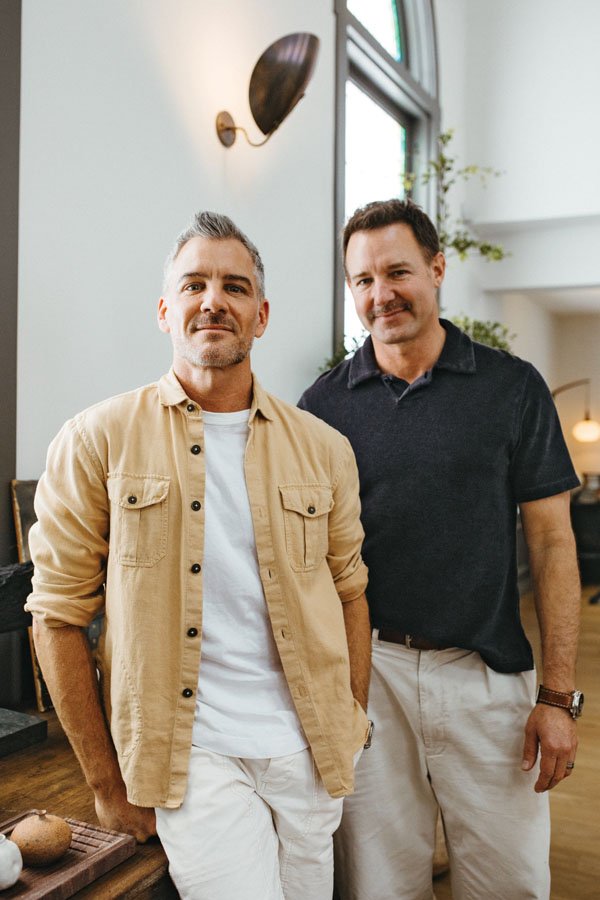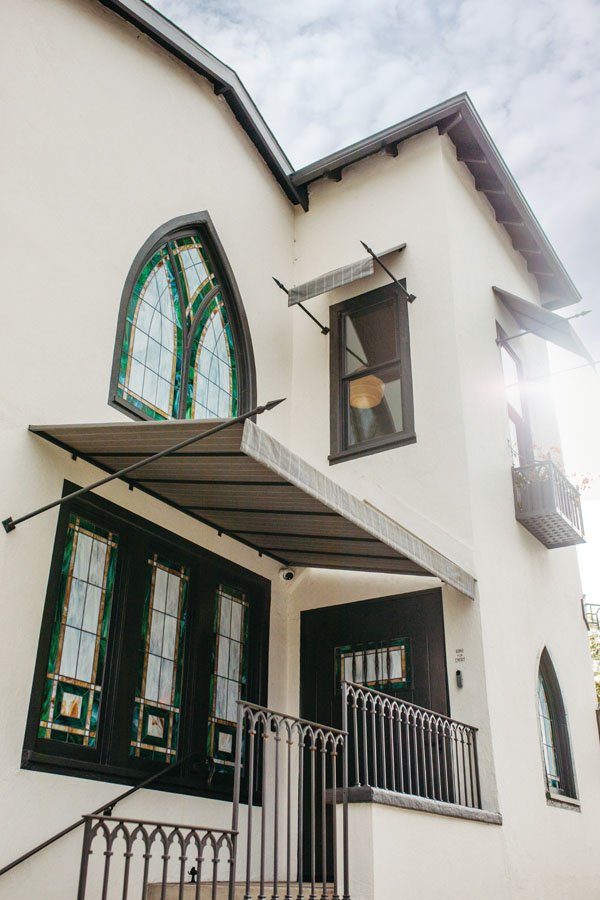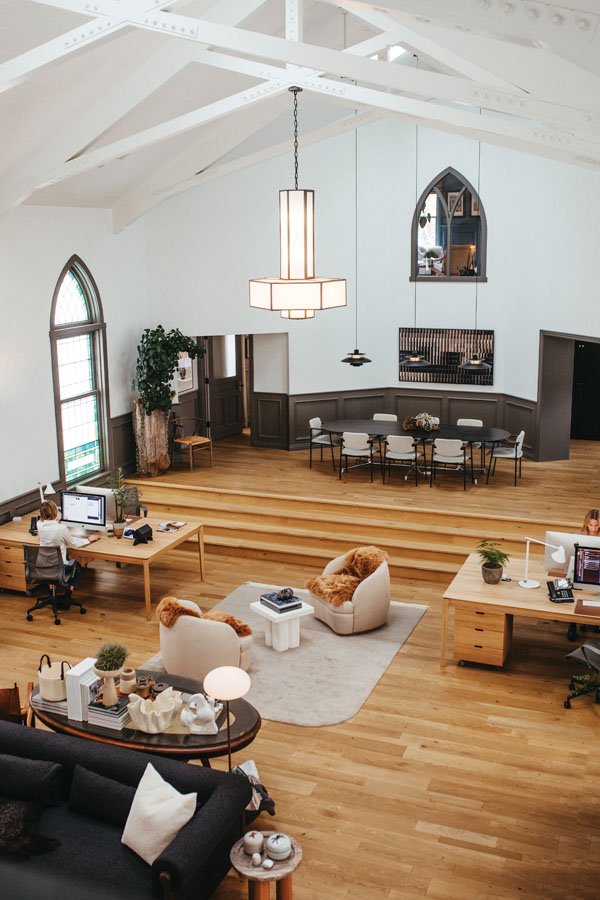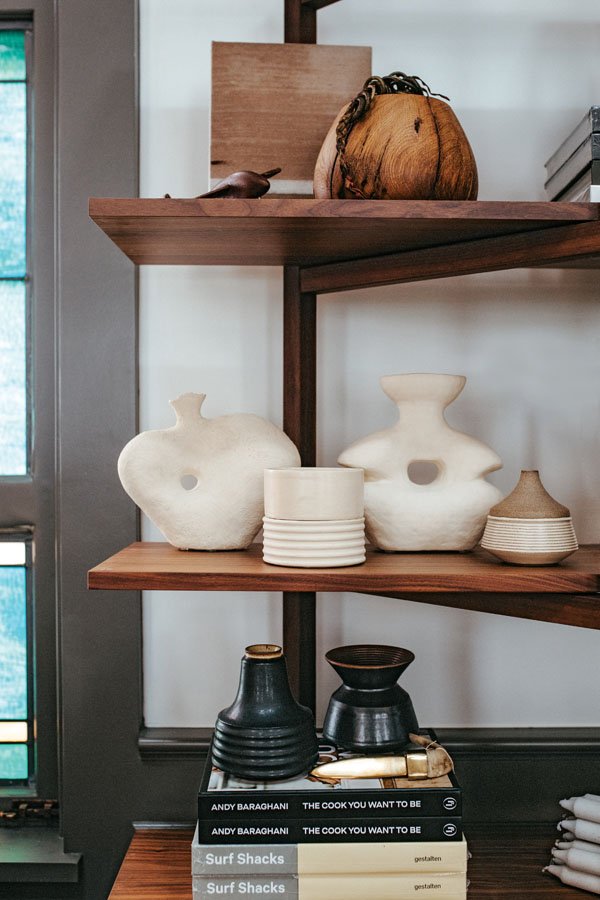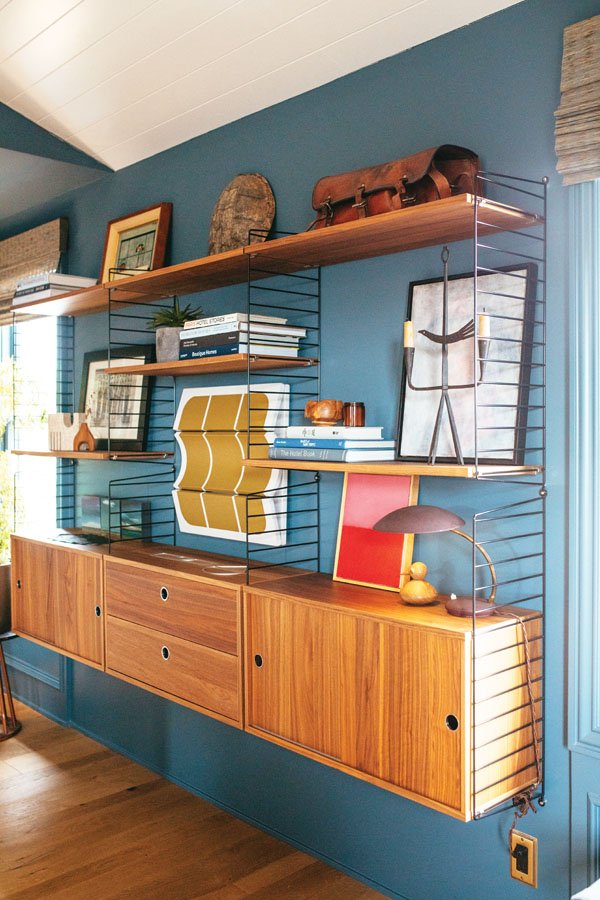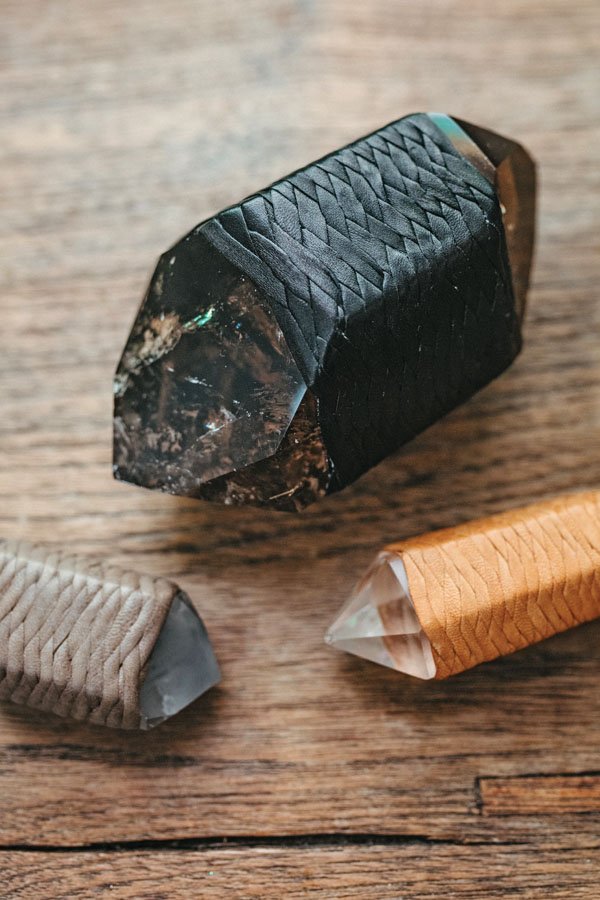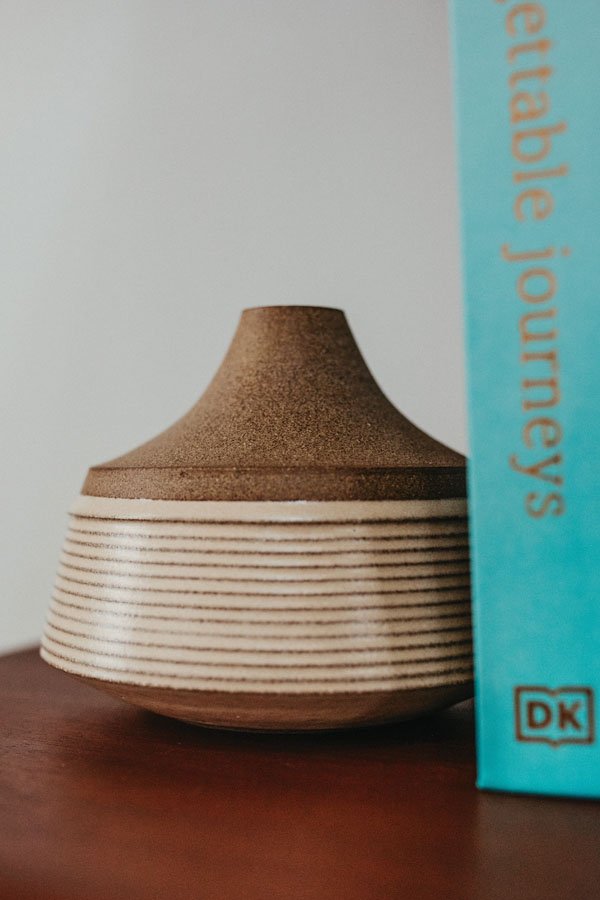Heading South
Explore Ventura’s flourishing surfing, arts, and culinary scenes.
Explore Ventura’s flourishing surfing, arts, and culinary scenes
Written by Hana-Lee Sedgwick
Photographs by Jessica Sample
Nestled between Carpinteria and Malibu, Ventura is a laid-back surf town known for its unpretentious vibe and small-town feel. Once a sleepy coastal enclave, it has recently evolved into a vibrant destination with an influx of inviting restaurants, unique boutiques, and artsy neighborhoods that enhance its creative, community-driven spirit.
Breakfast is a must at FRONTSIDE CAFE, located just a short walk from the beach. Here, husband-and-wife duo Joel and Charne Huff blend the flavors of her native Australia with his deep Ventura County roots. “After our last visit to Australia, we were inspired to bring the Australia café–coffee scene back to California,” says Charne. “We wanted to offer a place where the community could get an upscale coffee and a great breakfast or lunch made with local ingredients.” The chic, minimalist space is bright and airy, with a relaxed atmosphere perfect for a postsurf coffee and bite. The food menu, although selective, showcases a delightful fusion of Australian and Californian cuisine, including favorites like the Full Aussie Breakfast with eggs, bacon, and smashed potatoes, and the Smashed Avocado Toast, piled high with avocado, pickled veggies, and dukkah. 1070 E. Front St., Ventura, frontsidecafe.com
“Ventura’s cultural appeal is undeniable, but a visit wouldn’t be complete without a visit downtown.”
A short distance away along the coastline, the VENTURA PIER AND PROMENADE provides an excellent spot for taking a leisurely morning stroll and watching surfers. Surfing is ingrained in Ventura’s identity, and the number of surfers in the water on any given day proves the city’s surf culture is alive and well. A great place to catch some of the action is C Street, an area beyond the Ventura Pier at California Street; this spot is known for having one of the highest numbers of surfable days on the West Coast. This popular surf site becomes particularly lively during September’s annual C Street Classic, a celebrated surf-and-skate contest—now in its 38th year—that draws talented up-and-comers as well as water legends. cstreetclassic.com
Nearby, between Surfers’ Point and the Ventura Amtrak Station, the VENTURA COUNTY FAIRGROUNDS is a versatile venue for entertainment and cultural festivities throughout the year, and it’s especially bustling during the summer months. From June 28 to 30, the fairgrounds will welcome the X Games (xgames.com), bringing world-class athletes and extreme sports pros to showcase their skills in skateboarding, BMX biking, and Moto X. From July 31 to August 11, the annual Ventura County Fair (venturacountyfair.org) returns, captivating people of all ages with its array of games, carnival rides, agricultural exhibits, and rodeo events.
Ventura’s coastal appeal is undeniable, but a visit wouldn’t be complete without exploring Main Street downtown. Lined with architectural gems that house everything from vintage shops and eclectic art galleries to chic bars and eateries, this pedestrian-friendly district is a vibrant community hub.
After founding the Ventura-based lifestyle brand Iron & Resin, Thom Hill brought his passion for adventure and well-crafted goods to Main Street with the opening of THE IRON & RESIN GARAGE in 2012. Located in a century-old building with exposed brick and a roll-up garage door, the store offers a collection of goods that reflect Hill’s lifestyle and experiences, including durable outerwear and an eclectic mix of goods, like knives, books, camping gear, and barware. “Iron & Resin is really a mash-up of all the things I’m into,” says Hill. “I believe in owning fewer quality items that last a lifetime, and that’s the philosophy I hope this store embodies.” 324 E. Main St., Ventura, ironandresin.com
Discover thoughtful treasures from local artisans and independent designers at FINDINGS MARKET, a retail destination for women, men, and kids. Inside, you’ll find Ventura’s only candle bar, DUSK, which offers a collection of hand-dipped candles, crystals, handmade jewelry, and fully customizable glass candles that are poured to order. Also downtown is the newly opened FINDINGS FLEA, which is redefining the antique shopping experience. Housed in a 1907 brick building with exposed beams, this modern antique collective showcases unusual wares and vintage finds curated by more than a dozen collectors from along the California coast. Rotating events, vintage markets, and food pop-ups on the large outdoor patio enhance its community-centric essence. 27 S. Oak St., Ventura; 33 S. Palm St., Ventura, findingsmarket.com; @Findingsflea
Not far away, RUMFISH Y VINO provides a delicious respite from the bustle of shopping. After finding success with the original Rumfish y Vino in Belize, in 2016 Pamela and John Solomon opened their second location in downtown Ventura, just off Main Street. “When we opened Rumfish in Belize in 2008, we infused it with a little SoCal flair. This time, we’ve brought a touch of Belize to SoCal,” Pamela says. “We like to say it offers vacation vibes, no passport required.” True to their word, the space exudes a relaxed, carefree atmosphere, and the lunch, dinner, and beverage menus lean heavily into the seafood and tropical themes—think Caribbean fish stew, fish tacos, conch fritters, rum punch, and a best-selling orange-and-jalapeño-infused margarita. 34 N. Palm St., Ventura, rumfishyvinoventura.com
If Korean street food is more your speed for lunch, head across town to MATNA 1631, situated within the Victoria Village Shopping Center. Although it’s new to Ventura’s dining scene, the casual counter-service restaurant has already turned heads for its Korean-style ramen, kimbap, and fried chicken—all made in house. 1435 S. Victoria Ave., Ste. E, Ventura, matna1631.com
Back downtown, a half mile off Main Street, is BELL ARTS FACTORY. Established in 2006, this nonprofit, community-based arts center is a beacon of culture and creativity, providing a supportive space for local and multicultural artists to flourish. In addition to rotating art exhibitions and First Friday art shows, Bell Arts Factory hosts a diverse range of activities, including youth art classes, Aztec dance, artist-led workshops, and yoga classes. 432 N. Ventura Ave., Ventura, bellartsfactory.org
Next door, INDOEK seamlessly integrates Ventura’s rich artistic pursuits with its iconic surf culture. This chic gallery showcases coastal-inspired art, books, and other merchandise, along with a curated lineup of programming and events aimed at elevating the traditional aesthetic of the surfing lifestyle. 432 N. Ventura Ave., Ventura, indoek.com
After exploring Ventura’s diverse boutiques and galleries, recharge with dinner and drinks downtown. Kick off the evening with happy hour at MODEL CITIZEN. Situated inside a century-old building, the space highlights a casually cool, minimalist design featuring white-oak booths, rose-gold mirrors, and eye-catching curves. “We really wanted Model Citizen to be reminiscent of one’s favorite neighborhood restaurant/bistro in any respective larger city but with a focus on the amazing seasonal produce available, almost literally, in our backyard here in Ventura,” says Derek Ulrich, who co-owns Model Citizen and Prospect Coffee Roasters with his brother, Blake. Although the food menu changes frequently, staple dishes include the Ricotta Fritters—a happy hour hit—and dinner favorites such as the Roasted Rainbow Carrots with labneh, brown butter, and Ojai Pixies, and the Yellowtail Crudo topped with preserved lemon, pistachios, capers, and chiles. 70 S. Oak St., Ventura, modelcitizenvta.com
Italian cocktails are the specialty at BANK OF ITALY COCKTAIL TRUST, from Good Lion Hospitality. Located inside the Bank of Italy building, the venue features a French-Italian Art Deco design that creates a sophisticated ambiance, and the cocktails draw inspiration from the Central Coast and the coastal regions of central and southern Italy. Complementing the diverse beverage list is a food menu of Asian-inspired offerings by Sama Sama Kitchen. “Asian food is not the first thing folks think of in accompanying Italian-style cocktails, but it works surprisingly well,” says Brandon Ristaino, who co-owns the bar with his wife, Misty Orman Ristaino. “The high acid, pleasant bitterness, carbonation, and complexity of the Bank cocktails trade at an equal or contrasting volume to the food offerings.” 394 E. Main St., Ste. A, Ventura, bankofitalycocktails.com
The innovative Ristainos also own STRANGE BEAST next door, a contemporary cocktail Izakaya named after the mythical creatures of Japanese folklore, known as kaiju. “Inspired by the drinking dens of Tokyo,” explains Orman Ristaino, the space features a dark, moody ambiance, offset by pops of color and a striking wall of graphic pop art. The popular late-night spot offers an eclectic menu of punchy cocktails, sake, and shareable small plates like hand rolls and wings, crafted by the culinary team at Sama Sama Kitchen. Later this summer, the couple plan to broaden their creative ventures in Ventura with the debut of JAGUAR MOON, a tequila and mezcal bar developed in collaboration with Chef Ramon Velazquez of Santa Barbara’s Corazon Cocina. 394 E. Main St., Ste. B, Ventura, strangebeastbar.com
Also enhancing Ventura’s late-night scene is THE MAJESTIC VENTURA THEATER, which stands as a prominent fixture in the heart of downtown. Built in the 1920s and featuring the era’s popular Mission-style architecture, this lively concert venue hosts an eclectic lineup of musical performers spanning all genres of music, from punk and reggae to jazz and classic rock. Directly across the street, THE SEWER–SANS SOUCI, a divey cocktail lounge, is an ideal place to unwind with a postshow nightcap, enjoyed alongside more live music or karaoke. 26 S. Chestnut St., Ventura, venturatheater.net; 21 S. Chestnut St., Ventura, @sanssouci_vta
When it’s time to call it a night, the HOTEL SAN BUENA is conveniently located just a short stroll away. This 32-room boutique hotel, originally built in 1928 in a Spanish Revival style, beautifully marries historic charm with modern conveniences, featuring well-appointed rooms and suites and scenic city and ocean views. 11 S. Ash St., Ventura, hotelsanbuena.com
Regardless of how you spend your time in Ventura, no doubt you will leave with a newfound appreciation for its down-to-earth atmosphere, creative authenticity, and community spirit. “The laid-back vibe and hometown feel set Ventura apart from the beach towns south of us,” says Hill.
Adds Orman Ristaino, “Ventura is a really cool place, with vibrancy, diversity, energy, and natural beauty. But most noticeable is that folks here are really passionate about their community. It’s the people that make Ventura so special.”
See the story in our digital edition
Join the Club
Michael Haber, owner of White Caps Beach Club, describes his new venture as a place to eat, play, and stay, where “everyone’s a member.”
Written by Caitlin White
Photographs by Gray Malin
Michael Haber, owner of WHITE CAPS BEACH CLUB, describes his new venture as a place to eat, play, and stay, where “everyone’s a member.” A native New Yorker who was destined to be a West Coast transplant, Haber made a name for himself as a photographer before getting into the hospitality game by investing in properties in and around Summerland and Carpinteria. The latest is his just-opened beach club, which is located on a half acre next to the Nugget on Lillie Avenue in Summerland.
Anchored by a vintage-trailer-turned-restaurant serving lobster rolls (with fresh seafood from Maine) and other fare, the place has plenty of room for guests to spread out, enjoy a glass of wine or two, play some backgammon, and listen to live music. The terraced hillside hints at opportunities for future amenities like a stage, a movie screen, and a private banquet space. “I wanted to create the same energy I grew up with,” Haber says. “People don’t have to buy a lot; they can just enjoy and hang out, play backgammon, and listen to some Frank Sinatra.”
The club officially opened in late May, and Haber plans to begin a local membership system with perks like an automatic discount on purchases and monthly special wine tastings.
At the top of the hill, three short-term rentals—named Sail, Surf, and Sand, all of which have ocean views—cap off the project. Each suite has a separate bedroom, living room, and kitchen areas for guests. The middle unit, Surf, includes two queen beds, while Sand’s railroad-style layout accommodates a kitchen, a tiny office, a king bed, an outdoor deck with two seating areas, and an adjoining fire pit. But underneath it all, an East Coast influence is still evident.
“I was one of the first people to shoot and stay at the Surf Lodge in Montauk,” Haber says. “I always said, ‘One day I’d love to emulate that on the West Coast.’ And now I am.” @whitecapsbeachclub
See the story in our digital edition
Côte de Santa Barbara
The award-winning illustrator and graphic designer created the opener to this issue’s features section.
Peter Horjus, Côte de Santa Barbara, mixed media.
Peter Horjus
The award-winning illustrator and graphic designer who created the opener to this issue’s features section has merged his illustration and design work into large-scale paintings that combine his love for simple imagery, unique texture, and a nod to his favorite era—the 1940s. His clients include Saks Fifth Avenue, the US Open, Coca-Cola, Herman Miller, SC Johnson, and The New York Times. peterhorjus.com @peterhorjusart
SB MUST DOS
Running along the beautiful beaches like Butterfly and Hendry’s
Sketching ideas early in the morning at Handlebar Coffee at the marina
Trying out delicious appetizers at The Honor Bar.
See the story in our digital edition
Casino Royale
The Coral is back—and it’s brighter and better than ever.
The Coral is back—and it’s brighter and better than ever
Written by Jennifer Blaise Kramer
Photographs by Gray Malin, David Mendoza III
CORAL CASINO in Montecito is back after a four-year hiatus. During its pandemic-induced closure, owner Ty Warner put considerable thought and $108 million into renovations. Designed in 1937 by Gardner Dailey of San Francisco, the Moderne–Art Deco private club was a magnet for Hollywood stars, filmmakers, musicians, and authors. For decades, members lounged on its sandy “beach” or jumped from the high dive (both gone), and the scenic social hot spot hosted murder-mystery parties, fashion shows, and, of course, photo shoots.
“The historic Olympic Pool within the surf setting is a defining element of the club.”
The property has long been a favorite for photographers like Hal Boucher, who captured numerous celebrities there. He passed in 2020, and lifestyle photographer Gray Malin arguably stepped in as house photographer, first in 2017 when he shot synchronized swimmers and vintage balloons, and again this spring with a new breed of models: dogs, flamingos, and giraffes.
“It felt surreal to reenter such a special place after so many seasons have passed,” Malin says. “Few places in the world are as timeless as the Coral Casino. Whether it’s 1937 or 2024, a photograph in front of the clock tower—with Butterfly Beach in the background—is as ageless as ever.”
The photogenic striped awnings and iconic cabanas are still here (just crisper and costlier), and every corner of the club has been similarly upgraded. Architects Peter Marino and Barry Winick streamlined the landmark’s glamour.
“The historic Olympic Pool within the serene surf setting is a defining element of the club. We focused on elevating it with luxurious amenities, starting with the glass ocean-edge spa, the Coral Cafe, the enlarged Fins Surf Bar, and the whimsical improvements to the cabanas,” Winick says.
Upgrades include an oceanfront cold plunge; California’s largest glass spa, with seating for up to 25 and custom jets and lights; and the “Sandbox,” with 16 chaises sunk into sand imported from Malibu. Fitness stars Or Kahlon and Peter Park offer sculpting and training, respectively, and culinary legend Thomas Keller will soon be taking over the Tydes restaurant. For Warner, who has owned the property since 2000, it’s all in an effort to position the club to be the best. “What is unchangeable through modernizations is the club culture,” he says. “The casino is a time capsule of both social and architectural history, a place anyone would feel lucky to set foot in, and that will never change.” 1281 Channel Dr., Santa Barbara, coralcasinobeachclub.com
See the story in our digital edition
Divine Dining
For many Ojai residents, the parlor game of assembling a fantasy dinner party would likely include the irrepressible local ceramicist Beatrice Wood, who passed away in 1998 at the age of 105.
Beato Home features five pieces in a textured neutral white, meticulously crafted by Creative Fire Studio in Granada Hills.
For many Ojai residents, the parlor game of assembling a fantasy dinner party would likely include the irrepressible local ceramicist Beatrice Wood, who passed away in 1998 at the age of 105. Now fans of the iconoclastic multidisciplinary artist, known affectionately as “Beato,” can enjoy an homage to her legacy on their own dinner tables with BEATO HOME. “People just went crazy for it,” recalls Heather Stobo about the original dinnerware set crafted by Wood during the 1960s. The pieces were included in an exhibition she and Lisa Casoni curated at the Porch Gallery, the couple’s art-focused Ojai gathering place, which they closed last year. Finding a way to make Wood’s functional tabletop pieces more accessible to a contemporary audience was a logical next step, especially given their partnership with the Beatrice Wood Center for the Arts through Beato Chocolates, the artisanal candy line Casoni and Stobo launched in 2018. Beato Home features five pieces in a textured neutral white, meticulously crafted by Creative Fire Studio in Granada Hills. The collection, which is faithful to Wood’s original clay type, colors, and glazes, is available online and at select retailers, including Field + Fort in Summerland. Beato Home is an impassioned tribute to a one-of-a-kind spirit whose “greatest work of art was her life,” Casoni says. “She’s our North Star in the chocolate business and this dinnerware business.” beatohome.com
Global Goods
These chic shops and markets carry everything you need for a well-curated home and kitchen.
These chic shops and markets carry everything you need
for a well-curated home and kitchen
Written by Hana-Lee Sedgwick
Photographs by Blake Bronstad
Since debuting last year, THE EDDY has woven itself into the fabric of downtown Santa Barbara. Offering a well-chosen selection of elevated essentials and gourmet delights, along with engaging events and workshops, this modern corner store has redefined the idea of convenience. “We envisioned The Eddy as a hub, constantly adapting to the evolving wants and needs of our community,” says co-owner Alex Suhadolnik. “Our approach is very much community led, so we regularly incorporate customer recommendations, but we also hope to instill a sense of discovery.”
Here you’ll find a diverse mix of everyday necessities and unexpected goods, from tinned fish and artisanal candy bars to Rancho Gordo beans and nonalcoholic refreshments, along with grab-and-go items from local favorites like Merci and Riviera Bread. 137 E. De La Guerra St., Santa Barbara, shoptheeddy.com
“Every corner of the world is brimming with inspiration, which is why I regularly travel to various global markets in search of unique finds”
Effortless elegance is the theme at UPSTAIRS AT PIERRE LAFOND, the esteemed Montecito lifestyle boutique that has delighted locals and visitors alike for decades. An ever-evolving collection of stylish far-flung treasures and locally made gifts ranges from luxurious bedding and rugs to art, tabletop essentials, and children’s toys—each thoughtfully selected to celebrate the joys of artful living. “Every corner of the world is brimming with inspiration, which is why I regularly travel to various global markets in search of unique finds,” says buyer Emily DaFoe. “Our customers can always count on discovering something special and one-of-a-kind, whether for their own homes or for memorable gifts.” 516 San Ysidro Rd., Santa Barbara, shopupstairs.com
Bringing a touch of la dolce vita to the heart of Montecito is MONTESANO MARKET & DELI, a haven of Italian imports and local goods for the table and pantry. Besides the impressive selection of olive oils, jarred olives, authentic sauces, and gourmet pastas—each highlighting Italy’s rich culinary heritage—you’ll find table linens, wine, bespoke tote bags, and artisanal toffee. Also on hand are imported sausages, crackers, and cheeses—perfect for impromptu picnics at the beach. 1150 Coast Village Rd., Montecito, montesanomarket.com
“The vision at Field + Fort was to create a space where people enjoy delicious food and find inspiration.”
One need not be an interior designer to appreciate Summerland’s FIELD + FORT, a distinctive home-and-garden store that epitomizes refinement. “The owners’ vision was to create a space where people can gather, enjoy delicious food and coffee, and find inspiration in our carefully curated home goods—essentials for elevating living,” says general manager Paul Burns. Notably, Field + Fort is stocked with unique design accessories and products synonymous with quality and style, including items such as Sheldon ceramic dinnerware, Sferra towels, and Flamingo Estate bath products. The store’s pantry section offers gourmet foods like pasta sauces, balsamic vinegars, and olive oils, all destined to become kitchen staples. 2580 Lillie Ave., Summerland, fieldandfort.com
Following the success of its original Los Angeles location, Little Dom’s Seafood cast its culinary net to Carpinteria in 2020. Since then executive chef Brandon Boudet has enticed visitors with his delectable seafood and Italian dishes, infused with Southern flair as a nod to his Louisiana roots. This spring the coastal eatery is expanding with the debut of LITTLE DOM’S DELI & WINE SHOP. You’ll be able to pick up some of Chef Boudet’s signature creations, including his renowned tomato sauces and pickled vegetables. Additionally, the space will carry a range of house-made seasonal goods—think preserved lemons and fruit jams—as well as grab-and-go items like prepared salads and frozen meatballs. 686 Linden Ave., Carpinteria, ldseafood.com
See the story in our digital edition
Fresh Stock
Caroline Diani opened her first shop 22 years ago.
“I buy what I like to wear and have in my home, yet I’m constantly thinking of specific customers, especially those who’ve been with us over the years”
Caroline Diani
Written by Jennifer Blaise Kramer
Photograph by Meg Sandu Photo
Caroline Diani opened her first shop 22 years ago. With a background in retail and an education in fashion, she melded her skills to open a business that’s been a Santa Barbara fixture for more than two decades. The world of DIANI includes three storefronts—clothing, home, shoes—in Arlington Plaza, creating a lifestyle hub for countless locals. Being that go-to shop around the corner is both what keeps the doors open and what guides Caroline on what to stock. “I buy what I like to wear and have in my home, yet I’m constantly thinking of specific customers, especially those who’ve been with us over the years,” she says. “None of us are driven by trends; we like quality and understated style.” Caroline’s spring edit (her blog and newsletter are a must!) sports pops of color that appear in nature. For home she stocks her favorite cookbooks, serving bowls, and textiles, and she has been busy building her own home decor brand, The Stone Jug. Inspiration, it seems, is everywhere she turns. “I’m always looking for new lines for the stores, and traveling helps me find hidden gems,” she says. “My eyes and ears are always open.” 1324 State St., Santa Barbara, dianiboutique.com
See the story in our digital edition
Ahoy, Mate
Ten-year-old Mate Gallery, located in Montecito’s Country Mart, is home to all things nautical—from clothing and vintage accessories to home furnishings.
Written by Lorie Dewhirst Porter
Photographs by Matt Albiani
Owners Matt Albiani (left) and Ron Brand
Ten-year-old MATE GALLERY, located in Montecito’s Country Mart (the retail compound and de facto community center of Montecito), is home to all things nautical—from clothing and vintage accessories to home furnishings. Conceived and owned by Matt Albiani and Ron Brand, the shop was—according to Albiani—designed “to bring a bit of East Coast vibe to California,” and they have achieved that goal; the place is a style source for transplants and natives alike. Country Mart owner Jim Rosenfield recently enabled Brand and Albiani to triple Mate Gallery’s footprint, providing room for more bounty, including vintage furniture and fixtures. “Jim’s been very supportive of us and is a really good guy,” Brand says.
Albiani, a fashion photographer and Boston native, resides primarily in New York; Brand, a real estate agent, immigrated to Santa Barbara from Dundee, Scotland, in 1991. Together they cull and curate unique items that embody the Mate Gallery aesthetic. The pair also own a stylish getaway—dubbed “Sea Roost”—in Montauk, New York, that was recently featured on Magnolia Network’s Beach Cottage Chronicles and is available for rent on Searoost.com. “If you lived in Mate Gallery, it would be Sea Roost,” says Brand. 1024 Coast Village Rd., Montecito, 805-895-6283, mategallery.com
See the story in our digital edition
Desert Gem
Aman Resorts are known for boutique properties that epitomize remote splendor, and perhaps nothing in their portfolio fulfills that promise better than Amangiri.
Written by Caitlin White
Photography by Robert Rieger
Aman Resorts are known for boutique properties that epitomize remote splendor, and perhaps nothing in their portfolio fulfills that promise better than AMANGIRI. This isolated sanctuary in southern Utah, whose name means “peaceful mountain” in Sanskrit, draws much of its grandeur from a minimalist design set against the stunning backdrop of the stark Canyon Point desert. But it isn’t just sweeping views of the Grand Staircase–Escalante National Monument or the property’s incorporation of the culture of the nearby Navajo Nation that has elevated Amangiri into one of the world’s must-visit hotels.
Since opening in 2009, the 34-suite property has become synonymous with ultra-luxe hospitality and wellness—and a hot spot for celebrity guests who share their experiences on social media, cultivating a sense of exclusivity and prestige that has served the hotel well. In 2020 the hotel expanded with Camp Sarika, an enclave of 10 tented pavilions. That expansion dovetailed with concerns related to the pandemic, which spiked an interest in this distant, mostly outdoor getaway.
One of the selling points of Amangiri, then and now, is the way each room is oriented toward a view of the desert, bringing the outdoors in. The elegance of the decor—concrete, light wood, and earth tones—against the landscape enhances the serenity. Holistic wellness programming also adds to that: Carefully formulated offerings integrate many natural elements into the experience. For example, there’s yoga on the rocks, thermal therapy with saunas and cold plunge pools in the 25,000-square-foot spa, aqua shiatsu, and ai chi, a 4,000-year-old therapy derived from tai chi and qigong that seeks to optimize the flow of chi. If there were ever a place where your energy could unspool, untangle, and flow freely, it’s here. 1 Kayenta Rd., Canyon Point, Utah, 435-675-3999, aman.com
See the story in our digital edition
Charming Chatelaine
The concept behind the newly expanded DOMECÍL boutique on State Street is to showcase unique and handmade items for the home.
Written by Lorie Dewhirst Porter
Photography by Sara Prince
The concept behind the newly expanded DOMECÍL boutique on State Street is to showcase unique and handmade items for the home. Owner Stephanie Payne Campbell—a Santa Barbara native with a French soul and a sparkling personality—has an instinctive knack for sourcing items that are simultaneously utilitarian and indescribably beautiful: baskets and textiles from far-flung locations (Africa, Chile, Indonesia, Japan), locally made ceramics, linens and clothing (often of her own design), hard-to-find design books, cookbooks, jewelry, and more.
Homes also need art, and breathtaking nature photographs by co-creators Joslyn Lawrence and Brian Kuhlmann grace the shop’s gallery-like walls. And where else can you attend a love-letter workshop taught by local typewriter poet Simon Kiefer? Japanese and French stationery are available if you need something to write on.
It takes a truly sophisticated eye to convene and display these myriad treasures in a coherent manner, but Payne Campbell does so effortlessly and with enthusiasm. “It’s passion that’s gotten me this far,” she says with a smile. 1223 State St., Santa Barbara, 805-324-4971, domecil.com
See the story in our digital edition
Artist’s Retreat
Although it’s only a five-minute drive from Paso Robles’ town square, Steve Werndorf’s mystical micro hotel, INN PARADISO, feels like a world unto itself.
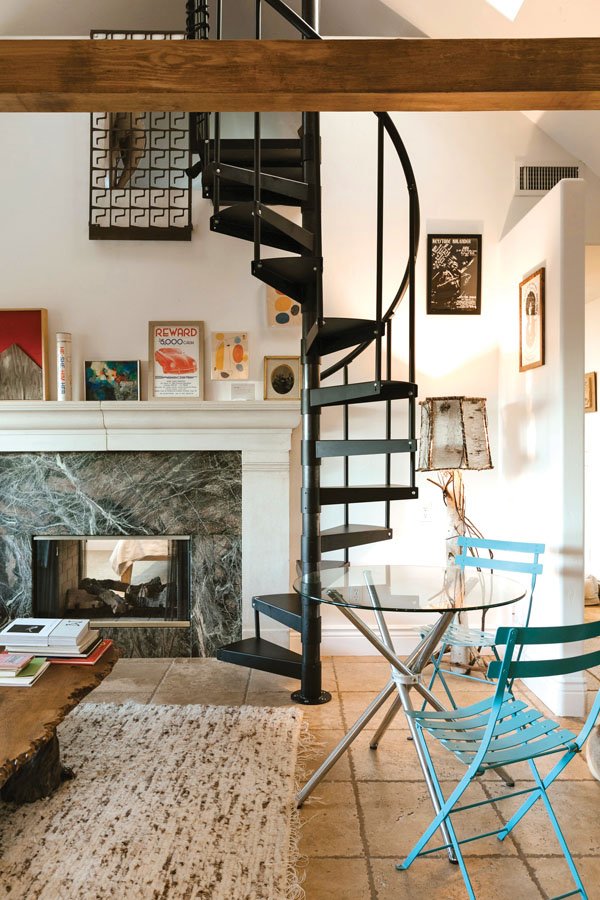
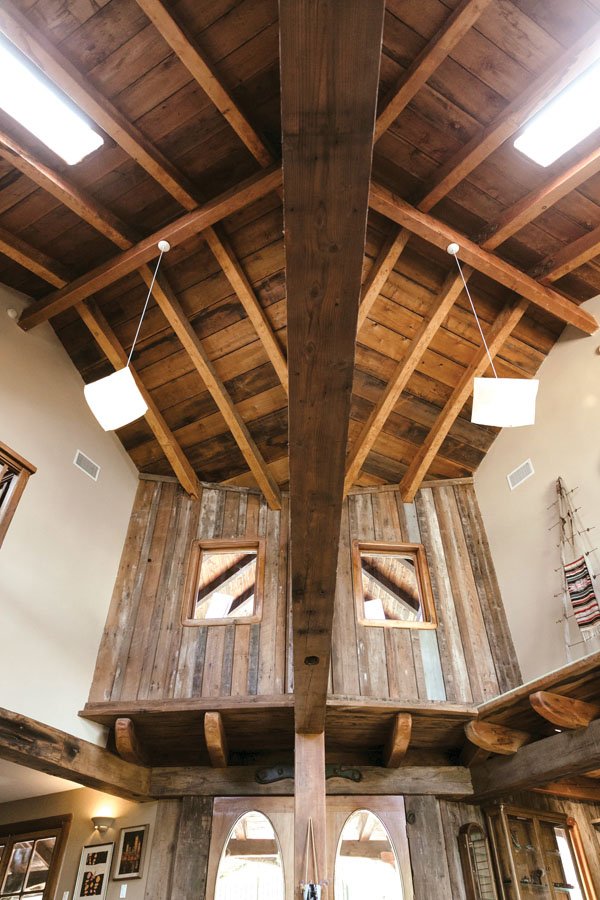

Written by Caitlin White
Although it’s only a five-minute drive from Paso Robles’ town square, Steve Werndorf’s mystical
micro hotel, INN PARADISO, feels like a world unto itself. Venture behind the gates and unlock one of three private luxury suites in the ‘70s-inspired lodge, where exposed wooden beams and a fireplace anchor the central room. Elsewhere, two more private loft suites adjoin a living area and kitchen for the owner, who may make you a cappuccino and explain that most of the art that adorns the property is from his personal collection. An artist and former movie poster designer, Werndorf has imbued the property with a mix of rustic charm and whimsy. His dressed-down Artist Studio is another suite available for booking. A pool and a greenhouse-style lounge, plus lawns surrounded by rare fruit trees, round out the 3.5-acre slice of paradise. 975 Mohave Lane, Paso Robles, 805-275-2706, innparadiso.com
See the story in our digital edition
Clay Masters
DUO LUTO is both a store and a brand conceived by Ojai ceramic artists Fanny Penny and Nicholas Ali.
Written by Lorie Dewhirst Porter
Photography by Stephanie Helguera
DUO LUTO is both a store and a brand conceived by Ojai ceramic artists Fanny Penny and Nicholas Ali. Roughly translated from Latin, duo luto means “mud duo,” an apt moniker for this creative couple who are part of a new generation of the town’s historic clay masters, including, famously, Beatrice “Beato” Wood and her friends Vivika and Otto Heino.
Growing up in Ojai, Penny frequented Duo Luto’s building, which formerly housed a baseball-card and comic-book store. “I remember telling my mom, ‘I want to have a shop someday and make things beautiful and present them to people,’” she says. “I always imagined that this would be my shop.”
Penny and Ali met in 2006; they married seven years later—at Ojai’s Rancho Inn—and have two daughters, Sadie and Gita. Ali hails from Torrance, California, where he did photography and painting and worked with wood and glass. But he never attempted clay until 2014, when he attended a ceramics workshop with Penny. “It clicked for me right away,” he says. “I was, like, this is my material. Why did I never try this?”
Penny’s clay journey began after Sadie was born. Itching to try something new, she began making ceramic necklaces strung on cords she made herself. These were sold at the now-shuttered Modern Folk boutique in Ojai, where Penny was working. “All of a sudden people who were retailers wanted to buy them,” she says. That included a large order from Urban Outfitters, which prompted the purchase of her first kiln, serendipitously once owned by Otto Heine.
Penny’s sought-after necklaces were followed by her outsize ceramic chains and, most recently, by her large-scale rope and ceramic wall hangings. Ali, who has become an expert on the potter’s wheel, makes exquisite, streamlined cups and vessels, among other items. Currently the pair have a thriving wholesale business with retailers nationwide and also take commissions for new pieces.
Their retail space has profoundly affected their clay practice. As Ali notes, “It informs the work when somebody picks it up and says, ‘Oh, this reminds me of something.’ It helps move that whole process through, because on a regular basis we’re talking about the work we’re doing.”Adds Penny, “It’s such a nice affirmation to have the community be excited to see what we’re doing. We’ve had a few locals come in and say, ‘This is the best iteration of this space so far.’ That feels nice.” 910 E. Ojai Ave., Ojai, @Duo_Luto
See the story in our digital edition
Garden Gone By
In 1970 society photographer Slim Aarons captured Mr. and Mrs. J. Gordon Douglas at the steps of their hillside Montecito estate.
Written by Joan Tapper
Photography by Slim Aarons/Stringer
In 1970 society photographer Slim Aarons captured Mr. and Mrs. J. Gordon Douglas at the steps of their hillside Montecito estate. The grounds of Il Brolino—Italian for “the little garden”—had been designed in 1922 for lumber heiress Mary Stewart by landscape architect Florence Yoch and Lucille Council to complement the Mediterranean villa–style house by architect George Washington Smith. The plan for the property included iconic formal features like parterres, a woodland, a rose garden, paved terraces, a cutting garden, a lemon house, a pergola, and topiaries. The symmetry and precision of the plantings are striking. Known for his access to the rich and celebrated, Aarons traveled from Hollywood to the famous playgrounds of Europe capturing the jet-set lifestyle for numerous magazines, and he was quoted as saying he focused on “attractive people doing attractive things in attractive places.” Il Brolino and its owners certainly fit the bill.
See the story in our digital edition
Breathing Life
Wallpaper is so 2023. Suddenly every hot workspace, restaurant, and home wants a wall that does more—a wall that’s alive.
Written by Jennifer Blaise Kramer
Photographs by Elliot Lowndes
Wallpaper is so 2023. Suddenly every hot workspace, restaurant, and home wants a wall that does more—a wall that’s alive. Terra Basche, owner of LUSH ELEMENTS, is the designer behind the living walls at offices of Netflix, Zoom, and Sonos. “We’re making headquarters unique as well as home offices, which may be smaller but can be special, sacred retreats,” she says. Having started as a florist, the self-trained designer creates massive living walls hung with mosses, ferns, and air plants that require little water and are low maintenance. (She also does follow-up care for most clients.) Her mural-like installations, in addition to edible towers and container gardens, are focal points at restaurants that include Local Montecito, Validation Ale, and most recently Silvers Omakase. There, owner and chef Lennon Silvers Lee dreamed up a back patio full of plants where his guests could pleasantly relax after their two-hour dining experience.
Basche is now on a mission to catch the attention of nonprofits, whose donors might consider sponsoring a living wall rather than giving cash. Currently the offices of the Wilderness Youth Project and the Community Environmental Council feature her living art, and she hopes others will appreciate the perks of working with plants, which buffer sound, add beauty, and increase air quality, well-being, and productivity. Says Basche: “When you live among plants, you sink into something so special at a cellular level, you just have to pay attention.” lushelements.com
See the story in our digital edition
Polishing a Hidden Gem
The history of CASA DEL HERRERO—House of the Blacksmith—and of Santa Barbara are inextricably linked.
Written by Joan Tapper
Photographs by Matt Walla/Rizzoli
The history of CASA DEL HERRERO—House of the Blacksmith—and of Santa Barbara are inextricably linked: On the morning of June 29, 1925, George Fox Steedman, owner of his family’s foundry in St. Louis, was staying at the Santa Barbara Club when a devastating earthquake hit the city, leveling most of downtown. He headed for his new home in Montecito, which had just been finished after three years of construction. The Andalusian farmhouse-style residence was fine, cementing architect George Washington Smith’s reputation and distinguishing the home as an early example of Santa Barbara’s prevailing Spanish look.
Steedman and his wife, Carrie, embraced the growing fashion for the Spanish Revival style, and Smith’s plans for the 7,000-square-foot residence incorporated arches, wrought iron, loggias, a red-tile roof, and Moorish accents, like the thousands of colorful tiles that grace fireplaces, fountains, and walls. To furnish the home, the Steedmans commissioned Hispanic art experts Arthur Byne and Mildred Stapley, and traveled with them around Spain, acquiring centuries-old treasures that eventually packed 160 containers.
The Steedmans brought on Ralph Stevens to develop the garden and grounds, which soon encompassed 11 acres. In the back of the house, the garden extends from a loggia down a long grassy allée, while the rest of the extensive grounds are divided into a series of “rooms.” An enclosed Spanish garden opens to a blue-and-white garden with gorgeously tiled benches and a fountain. There’s an herb garden, a boxwood-edged rose garden, an Arizona garden, and extensive orchards. One of the most extraordinary features of the estate is the workshop, where mechanical engineer Steedman designed and crafted silver, other metalwork, and even garden furniture.
Charles Steedman died in 1940; Carrie passed away 22 years later. Medora Steedman Bass, who inherited the house from her parents, lived there until her own death in 1987, after which the family established a foundation that eventually opened the residence and grounds to the public in 1995. Visitors who come for docent-led tours are wowed by the place, which has maintained a low profile for the past three decades.
Now, however, it’s time for the Casa to step into the limelight—and ensure it is ready for its next 100 years. To begin, the foundation is leading up to its centennial with programming that more closely connects the place to the community.
“Medora Steedman Bass wished for the future of Casa to pursue and support the interests of her and her family,” says Edwin Rodriguez Jr., marketing and events director. These include “gardening, architecture, metalwork, silversmithing, restoration of the grounds, global problems, sustainability, population control, family planning, mental health, arts and literature, film, and several others.” Adds board chair Heather Biles, “We are working hard to open the doors of Casa del Herrero to a wider audience and to bring to the community new and interesting ways to experience the Casa.”
Meanwhile, the board is launching an $18 million capital campaign—headed by Palmer and Susan Jackson, who have kicked things off with a $1 million donation—to support preservation of its architectural legacy and protect the institution’s future. The hidden gem will be hidden no more. Santa Barbara architect Marc Appleton says, “The Casa, one of Santa Barbara’s best-kept secrets, is a unique, historic, and special place for the community of Santa Barbara to be able to enjoy, support, and cherish.” 1387 E. Valley Rd., Montecito, casadelherrero.com
See the story in our digital edition
Table Talk
Beautiful books to spark inspiration for your home and garden
Beautiful books to spark inspiration for your home and garden
Written by Lorie Dewhirst Porter
See the story in our digital edition
Style Sanctuary
A historic church has been transformed into a multipurpose studio and shop
A historic church has been transformed into a multipurpose studio and shop
Written by Jessica Ritz
Photographs by Sara Prince
“The partners—in business and in life—eventually realized the opportunity to add something more to the meaningful site”
While the Second Baptist Church that has stood on East Gutierrez Street since 1926 no longer functions as a house of worship, Ryan Brown and Diego Monchamp of the Brown Design Group are continuing its legacy in fresh ways. The historically protected building was originally home to the Black congregation that was established in Santa Barbara in 1910, then to Church of Skatan, the popular skate shop and locals-only spot. After years of physical decline, interior designers Brown and Monchamp, who work in Los Angeles and Santa Barbara and settled in Santa Barbara full time in 2020, are ushering the property into its next chapter with care. As of this spring, it’s the headquarters of their Brown Design Group, featuring a lifestyle boutique appropriately dubbed MINISTRY OF THE INTERIOR.
“It was a great collaborative process to restore it,” Monchamp says of the 4,700-square-foot Gothic Revival building. He and Brown pored over the church’s archival materials and learned about its cultural and social significance from local historians. They repaired the stained glass windows using the original fabricator, designed new custom lighting pendants built by SH Studios, and increased the ceiling height with new trusses and skylights. “DMHA and Henry Lenny Design Studio were fundamental in helping us pull this off,” Monchamp says of their consulting architects.
Restored Gothic arched stained glass windows and new railings have renewed the historic site’s presence on East Gutierrez as Ministry of the Interior; the former sanctuary now houses the team’s working spaces and a welcoming retail experience; Brown’s and Monchamp’s respective studios are on the upper level; “My favorite aspect of our job is the final touches—the accessories, the art, the lighting,” Brown says of offering eclectic goods such as leather-wrapped crystals; partners Brown (left) and Monchamp; more curated finds.
“My favorite aspect of our job is the final touches,” Brown notes. “The accessories, the art, the lighting.” Ministry of the Interior was a way to respond to clients’ wishes to “shop from our shelves” for items like that and also fill a local retail niche.
The inventory features Brown’s finds from his recent travels to 15 countries. Books, small vintage goods, and furnishings from places such as Denmark and Argentina intermingle with ceramics by Chicago-based Julia Archer and braided leather-wrapped crystals crafted by Los Angeles artist Matthew Ready. A seating vignette with a residential feel is another delightful surprise. “My goal was to have it be approachable,” Brown says. Think of this store as a new type of welcoming sanctuary for design lovers. 26 E. Gutierrez St., Santa Barbara, 805-228-4113, interiorministry.com
See the story in our digital edition
The Orchid Chief
Beauty and community meet at Westerlay Orchids
Beauty and community meet at Westerlay Orchids
“One of our core values is community,” Overgaag says. “We donate to just about everything local.”
Written by Jennifer Blaise Kramer
Photographs by Sara Prince
It seems there’s not a benefit, a gala, or an auction in Santa Barbara County that doesn’t have an orchid at its center. And the mastermind behind those appearances is Toine Overgaag, president of WESTERLAY ORCHIDS, who took over the family flower business from his parents and is upping not only its acreage and output but also its philanthropy, which has always been at its heart.
“One of our core values is community,” Overgaag says. “We donate to just about everything local,” which includes the Council on Alcoholism and Drug Abuse’s Amethyst Ball, Dream Foundation’s Flower Empower, and the Santa Barbara Breast Cancer Center. One element of their commitment to the community is an annual fundraiser where every dollar from a week of retail sales directly supports the Carpinteria Education Foundation’s arts and STEM programs. “It’s hyperlocal—a dollar goes so much further at these schools,” he says.
Always looking to make an impact, Overgaag ensured that orchids were popping up everywhere during the pandemic, when supermarkets were scaling back or cutting floral offerings entirely. He launched the “100,000 Orchid Challenge,” in which his team donated flowers to hospitals across California, sending trucks filled with 8,000 orchids each for health care workers to take home. Another initiative led to deliveries for neighbors and friends, lifting spirits when people really needed that blooming surprise.
“There’s a relational aspect to orchids,” says Overgaag. “People feel responsible to take care of them and then share their story.” In fact, he’s heard so many moving orchid tales—about how a grieving person tended to a loved one’s plant or how an orchid led friends to reconnect—that he used it in the company tagline: Every Orchid Has a Story. “You realize you’re in the connection business, not the flower business,” he says. “It’s a privilege to step in and help locally.” 3504 Via Real, Carpinteria, 805-684-5400 ext. 120, westerlay.com
See the story in our digital edition
Hollywood 101
Our world-renowned FILM FESTIVAL finds the sweet spot between Hollywood and international cinema
Our world-renowned FILM FESTIVAL finds the sweet spot between Hollywood and international cinema
Written by Josef Woodard
The 39th annual Santa Barbara International Film Festival, which wrapped on February 17 with the world premiere of Heather Graham’s good-natured rom-com Chosen Family, achieved its long-standing game plan of finding the sweet spot among Hollywood celebrities and Oscar-timed buzz, serious international cinema, feel-good diversions, documentaries, and other facets of film.
As a popular part of its densely packed 10-day (plus one opening night) festival, the celebrity-tribute component was well stocked with Oscar-nominated actors, starting with the prefestival Kirk Douglas award tribute to Ryan Gosling (aka “Ken”). Regrettably, Annette Benning—the only woman on the tribute schedule—had to cancel. But due kudos were given to other powerful actors—Robert Downey Jr., Mark Ruffalo, Paul Giamatti, and Jeffrey Wright (honored for his rare leading role in American Fiction). The Outstanding Directors night focused on Justine Triet (Anatomy of a Fall) and Martin Scorsese (Killers of the Flower Moon), who accepted his award by asserting that “the real gift was getting to make the movies.”
Three peripheral celebrities generated their own special buzz. Lily Gladstone, the first Native American nominated for an Oscar (for Killers) was greeted with a hero’s welcome; she commented, “A win by one of us is a win for all.” Billie Eilish showed up at the Arlington and helped sell out the normally more specialized Variety Artisans panel, noting that her Barbie theme song “picked me up like a little hook lifting me out of a dark place.” Musician John Batiste showed up for a soulful and heartfelt Q&A with festival head Roger Durling, following the poignant doc American Symphony.
In the all-important heart of the program—its 200-plus screening schedule, with an unusually broad geographical sweep—programming director Claudia Puig, in her third year here, summoned an impressive range of cinema. By festival’s end, the avid SBIFF-goers could find resonance in Durling’s opening night comment that “we come to the movies for the feeling of being alive.” sbiff.org
Tibrina Hobson/Getty Images (Brad Pitt; Finneas and Billie Eilish). Rebecca Sapp/Getty Images (Bradley Cooper; Jeffrey Wright; Paul Giamatti; Roger Durling, Justine Triet, and Martin Scorsese; Emma Stone; Mark Ruffalo; Greta Lee, Andrew Scott, Charles Melton, America Ferrera, Lily Gladstone, and Da’Vine Joy Randolph; Cillian Murphy, Robert Downey Jr., and Rob Lowe)
See the story in our digital edition
Bicoastal Book Soirée
President and CEO of Paramount Pictures Brian Robbins and his wife, Tracy, hosted an intimate event at their home in Montecito last weekend to celebrate the release of Jeremiah Brent’s first book, The Space That Keeps You.
Designer Jeremiah Brent toasts his tasteful tome in Montecito
Photography by Eric Charbonneau/Getty Images for Paramount Pictures
President and CEO of Paramount Pictures Brian Robbins and his wife, Tracy, hosted an intimate event at their home in Montecito last weekend to celebrate the release of Jeremiah Brent’s first book, The Space That Keeps You. Brent is a celebrated AD 100 interior designer and a just-announced new cast member of Netflix’s critically acclaimed hit series Queer Eye. The book currently holds the #1 spot on Amazon’s Interior & Home Design list.
Oprah Winfrey, Ellen DeGeneres, Portia de Rossi, Nate Berkus, Jordana Brewster and husband Mason Morfit, Fatima Robinson, fashion designer Anine Bing, and SB Film Festival’s Roger Durling were among guests who attended the event. Three of the stories featured in the book are in the Santa Barbara area so it was a very special place to host the launch of the book.
“Jeremiah has been our dear friend for over six years, and to host his party in a place that so deeply embodies the spirit of his book felt so meaningful. He has truly made our house into a home that reflects the essence of who we are, and we’re so grateful for the personal warmth he brings to every detail of every corner of our home. And then when you consider that three of the stories featured in the book take place in the Santa Barbara area, it was very special to bring everyone together here, and Brian and I were honored to host this event.”





















































